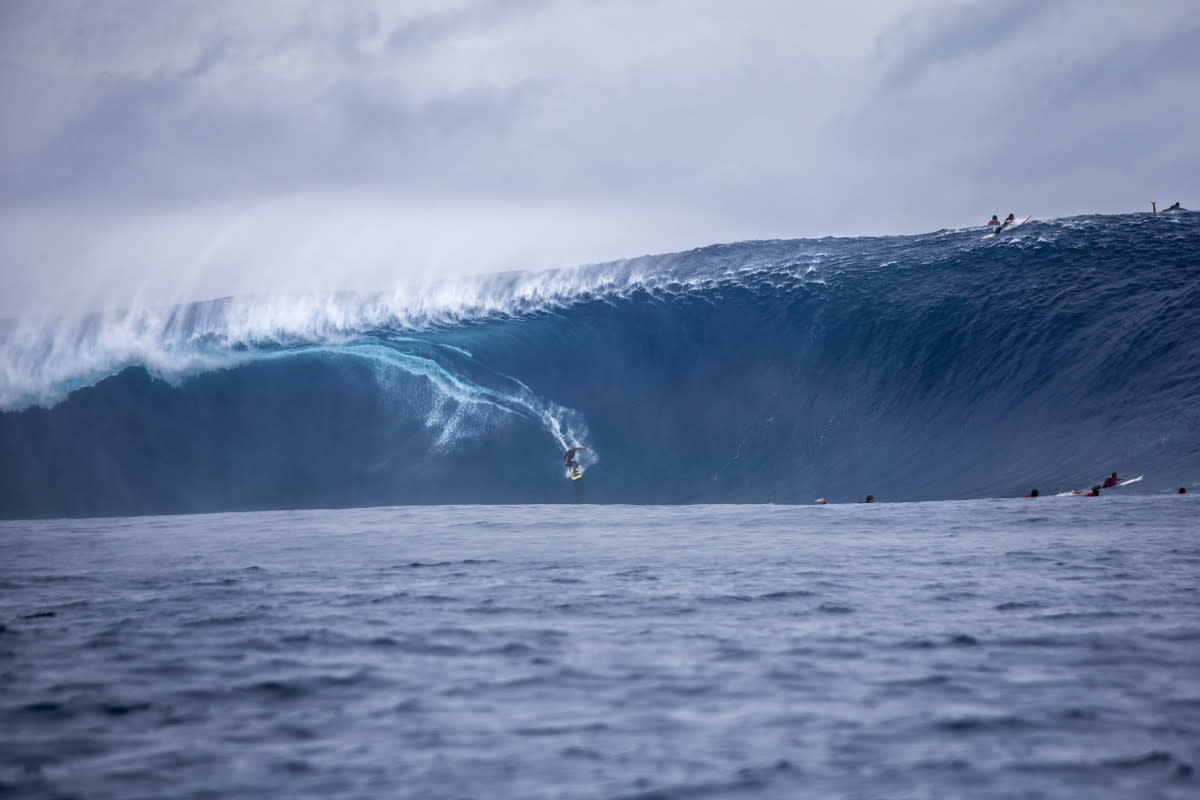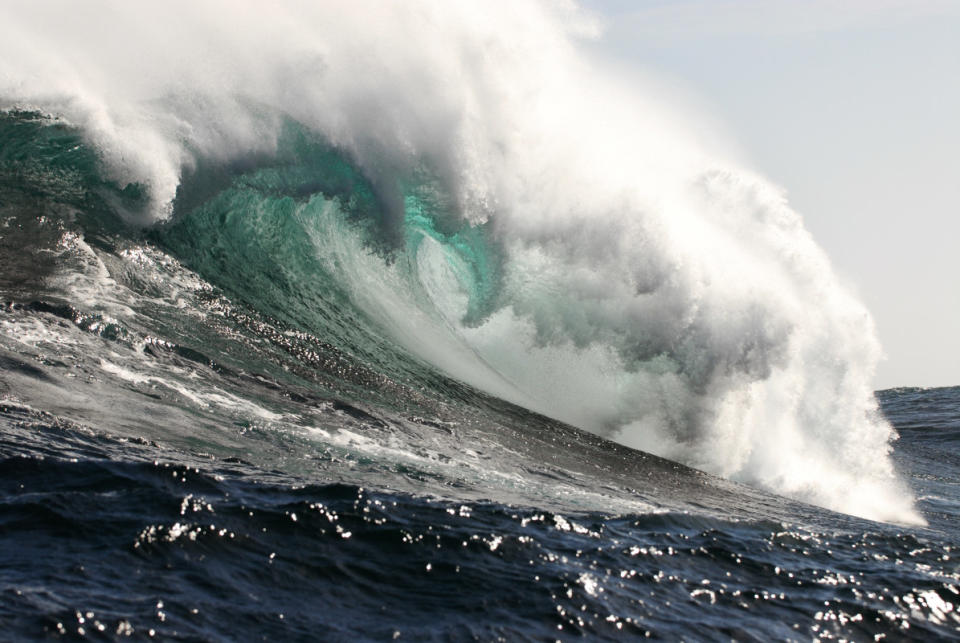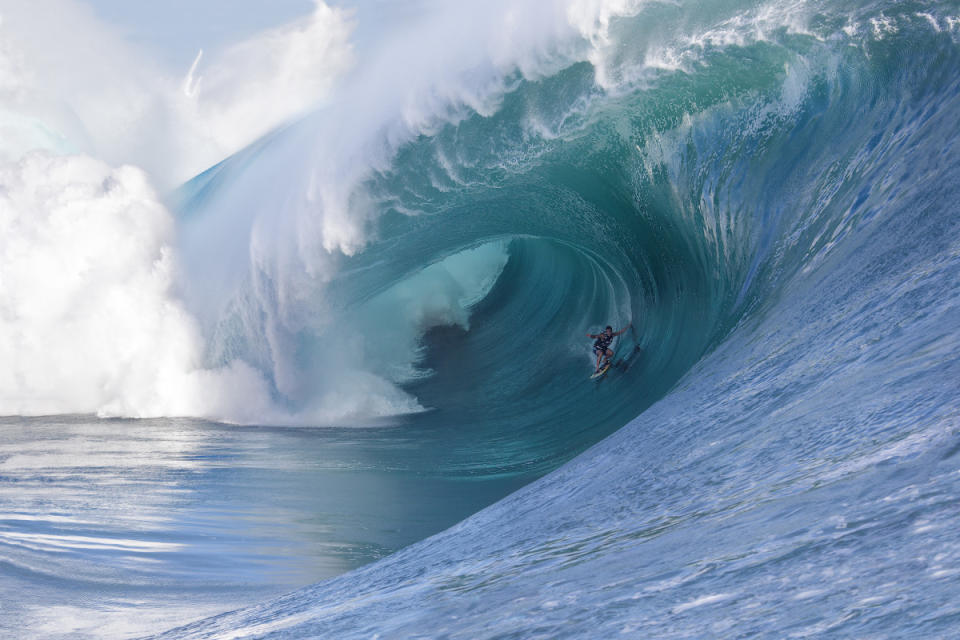Summer Lovin': The Big Wave Focus Turns South

Fred Pompermayer/BWC
“I focus on Jaws during the Northern Hemisphere winter and then switch to Dungeons for our South African winter,” says charger Matt Bromley. “There are massive, incredible, barreling waves out at Dungeons that can easily be The Ride of the Year. Seeing them is one thing though; catching them is another.”
One of Bromley’s mentors, Saffa, and 3X World Champion Grant “Twiggy” Baker managed to catch one of the best big waves of 2023 at Dungeons last October. It again put that cold, sharky, big-wave spot located off Cape Town’s Hout Bay back in the big-wave spotlight.
And yet the Southern Hemisphere is often somewhat overlooked for premier big-wave surfing.

Getty
Nazare, where the SURFER Big Wave Challenge awards night will be held in October, regularly churns out the biggest waves in the world from October to March. A wave ridden by Sebastian Stuednter in January 2024, which he (and his team of Porsche engineers) measured at 92 feet will surely be a contender for a gong. Elsewhere, Mullaghmore, Mavericks, Jaws, and Cortes Bank are all northern hemisphere heavyweights that attract big wave surfers like influencers to sunsets.
And yet as the North Pole tilts towards the sun, and the winter storms stop swirling up north, the world’s best big wave surfers swivel their focus to the lower latitudes. In Australia, Shipsterns has already throttled and gurgled into life in recent weeks. Surfer and shaper Dylan Longbottom and his team rider Laura Enever were on hand for the first swell of the season, throwing their hats in the ring for best wave and heaviest wipeout.
“It’s early in the season for Shippies,” the 50-year-old Longbottom told SURFER “But we’ve already had two swells, with great winds. Hopefully, the run continues. It has to be one of the best big-wave slabs on the planet.”
Related: When Shipstern Bluff Lights Up, The Footage Never Disappoints (Watch)
In March, one of the Southern Ocean storms that feed Shipsterns spun off the Antarctic ice shelf, hit full throttle up the Tasman Sea and scoped its long-period energy at Fiji. The outer shelf of Cloudbreak and surfers like Billy Kemper, the Coffin Brothers, Benji Brand, Nathan Florence and Laura Enever were all there to gratefully receive one of the most perfect big wave sessions in recent times. However, it was ex-CT surfer Soli Bailey that probably claimed the wave of the day and an early running for the Ride of the Year.

Fred Pompermayer
Further east of Fiji, Teahupo’o is also starting to come into season. The famous Code Red swell was in August 2012, whilst its sequel, Code Red 2, popped up almost ten years later in July. Another sequel, the Point Break 2 swell, hit in September 2015. And just last week, a week ahead of the Teahupo’o CT event, the world’s best sampled a solid swell at the End of the Road. The world’s most beautifully terrifying wave often goes XXL in the summer months, when southern swells steam up from the South Pacific.
Related: Photos: Teahupo'o Flexes Ahead Of 2024 Tahiti Pro
South swells are the mana for the southern hemisphere big wave locales. Puerto Escondido is the biggest rideable beachbreak after Nazare, and both share offshore canyons that amplify large waves into XL waves. Peruvian behemoth Pico Alto doesn’t need a canyon; the reef juts a mile out to sea and hoovers up the biggest South Pacific swells, turning them into giant, majestic righthanders.
“It’s possible to ride the biggest and heaviest waves in the world in the lower latitudes." – Bromley
Finally, Punta de Lobos is Chile’s reeling left point that, from June to September, steroids into the country’s biggest wave. It can handle the deepest low pressures that march along the storm conveyor belt from New Zealand to Cape Horn. A local crew headed by Ramón Navarro, Diego Medina, Cristian Merello, Tristan Aicardi, and Fernando Zegers will then paddle the 10-meter-plus waves that break behind the iconic island rocks of Los Morros.
“The Southern Hemi is really starting to come alive,” concludes Bromley. “It’s possible to ride the biggest and heaviest waves in the world in the lower latitudes. We’re primed and ready. Let’s see what goes down.”
